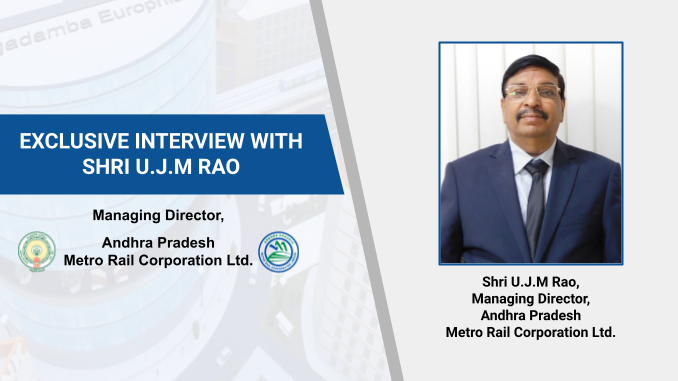
Interview Insights:
Introduction: Shri U.J.M Rao, an IRAS officer, is the Managing Director of the Andhra Pradesh Metro Rail Corporation Ltd. Prior to joining the AP Metro Rail Corporation, he was Financial Advisor & Chief Accounts Officer, working for Indian Railways. He has rich experience and in depth knowledge in Railways and Metro Rail sectors by virtue of working in top managerial positions for over 40 years.
Presently, he has been handling 4 major Metro Rail and other Urban Transportation Projects under implementation by Andhra Pradesh worth more than INR 40,000 Cr. in value. In the present tenure, He is actively involved in planning and designing the major Mass Rapid Transport Projects that made him an expert in Metro Rail Systems. He has participated in many Seminars and Conferences connected with Rail & Metro Rail Sectors and was a Special Guest Speaker in many National-Level Conclaves & Conferences.
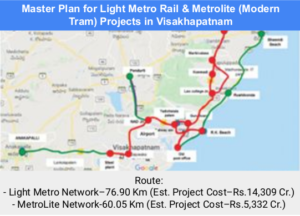
Rail Analysis: Can you please provide us the latest status and update for the projects of Vijayawada and Vizag metro ? What is the Financial Model chosen for implementation of these projects?
Shri U.J.M Rao: Previously, We got the DPRs prepared for Metro Rail Systems in Vijayawada and Visakhapatnam Cities by DMRC. DMRC recommended for 26 Km in Vijayawada and 42 Km in Visakhapatnam covering only the busy Corridors in the Core City.
Later, the State Government thought that it would be better to spread this sophisticated and superior system in the entire city. And, ridership wise even considering the future traffic needs for the next 35-40 years, a Light Metro Rail System will be sufficient in place of a higher version like Delhi Metro.
In view of these important aspects, now the State Government have planned for 77 Km Light Metro Rail Network in Visakhapatnam City extending up to Bhogapuram, the upcoming Visakhapatnam International Airport and for 38 Km in Vijayawada extended up to Gannavaram connecting International Airport and for which the new DPRs have been got prepared and are under approval by Govt of Andhra Pradesh and Govt of India. The priority Project is Visakhapatnam Light Metro; being planned under PPP-VGF financial model.
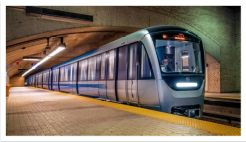
Rail Analysis: After the major boost to public transport in tier two and three cities, the Central government has proposed MetroLite, Neo-Metro and Water Metro which will provide an efficient mass public transport system. So can you see this as a step towards sustainability in metro projects all over in india? What are your thoughts on this?
Shri U.J.M Rao: Metro Rail Systems are the most modern and the robust mass public transport systems which provides all comforts to the travelling commuters. The pollution-free and Eco-friendly transport is very much essential in the ever growing populated Indian cities.
“However, Metro Rail Systems are Capital Intensive Projects that needs huge Capital Investment. City Public Transportation comes under State Govt subject and hence, the cost is compared to the other modes of Public Transportation and therefore more concerned about the financial sustainability of the System. The rail based Metro Systems, even though required huge initial investment, would remain as the most economical transport system in the long run.“
We first established Metro Rail System in Delhi by adopting from Japan considering the city population, the daily ridership, the PHPPDT etc.. And the same system has been replicated in the smaller cities also, where the ridership is not so much and running into operating losses owing to lesser revenues. These systems take long time to reach breakeven and earn profits.
Therefore, my strong view is that in Tier-2 & Tier-3 cities, where the population is less than 50 lakhs, a smaller version Metro would be enough to cater to the traffic demand even for the next 35-40 years. That’s why in Andhra Pradesh, both for Visakhapatnam and Vijayawada cities, a smaller and smarter Light Metro System has been planned. Infact these are similar to LRT System operational in about 290 places, mostly in Europe.
“MetroLite and Neo Metro are certainly less costlier, but each system has its own disadvantages. MetroLite System is similar to the Modern Tram Service to be operated at-grade, but it is difficult to establish in the narrow and crowded city roads. This is reason, in all the 28 cities where Metro Rail Systems are operational / Under construction, are either Elevated or Underground.”
This System is adoptable in the city outskirts and the new built cities. MetroNeo is run on rubber tyre-based system similar to long modern busses, for which wear and tear is much more and therefore O&M expenditure is very high. Both these Systems have carrying capacity limitations and hence may not be suitable beyond 8200 PHPDT ridership.
We, in Andhra Pradesh by adopting cost-effective Light Metro Rail System and other cost-saving measures, the financial sustainability of our systems is sure and certain. I firmly believe that this System should be implemented in all Tier-2 & Tier-3 cities in future.
Rail Analysis: What are the possibilities of taking up more Metro Rail Projects on PPP (Public Private Partnership) Model to lessen the financial burden on the Governments?
Shri U.J.M Rao: Yes, the metro rails systems have many value added advantages to the people as well as to the Governments in the transport sector. However, since these are capital intensive projects, there is a financial stringency to the managements until the breakeven point is reached.
When the State Governments plan for establishing in more cities in the State, the cumulative investment would be felt financial burdensome. Hence, there is an immense need to encourage private participation under PPP-VGF Financial model as per Metro Rail Policy-2017. In order to encourage more PPP Projects, the State Govts. have to provide more incentives to make the projects financially viable.
Following suggestion are made to attract the private Developers and Investors for taking up the projects on PPP model:
a) No levy of local taxes, subsidised power tariff, liberal fare revision policy etc..,
b) Where required FIRR (say about 13%) is not working out from fare box and non-fare box revenues, either additional land parcels to be given for property development revenues or O&M support for initial 5-8 years.
c) Additional FSI / FAR to be granted on the Metro depots and station buildings for property development under TOD policy and to earn additional revenues by Managements.
d) Entire VGF grant may be released fully during the constructions period of the project instead of partial release of funds during construction and during O&M period. The Developer needs more financial support during initial construction period.
e) Government of India is requested to recommend ODA loans from Bilateral / Multilateral funding agencies to PPP Projects also on the same lines for Govt. JV Model.
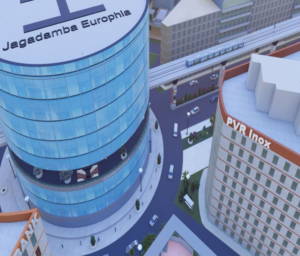
Rail Analysis: Recently, MRVC also announced the rolling stock tender of Vande Metro. Do you find these coaches also becoming a part of metro projects in the country?
Shri U.J.M Rao: Today, 60 Metro Rail Projects in 28 Cities are either operational or under construction or under financial closure after approval. The target by 2027 is to cover 75 cities in India for which 3 lakh Cr funding is estimated.
It speaks about wide spread of Metro Rail Systems across India in the next 5 years’ period and consequently, there will be a huge requirement for construction materials, rolling stock systems, P-way, and power supply equipment, etc.
During operations, the spares, replacements and other accessories give a large scope for ancillary Industries. With India’s determination for “MAKE IN INDIA and make for the World”, “Vocal For Local”, etc.. concerted efforts are being made for manufacturing almost all these items in India.
Five manufacturing units for Metro Rail Rolling Stock and Systems have already been established in the Country and the Industry is further growing. I have explained about the scenario in the metro rail sector and similar is the progress and prospectus in the case of rail sector viz. RRTS, Sub-Urban rail, DFCC and IR organizations.
Rail Analysis: What is your opinion on the future of Indian metro infrastructure & technology by 2030? What are the new technologies, initiatives and methods needed to adopt?
Shri U.J.M Rao: The new technology and innovations have been aimed at invention of the most economical and cost-effective products. The research studies should be focussed on qualitative durable Systems proving the life costs to be economical. The digital technology is being optimally utilised by this sophisticated Metrorail Network, minimising the O&M costs.
The Metro Rail organizations are adopting the latest systems that are available from time to time and where possible the older systems are replaced to gain the maximum advantage out of the new inventions. As the metro rail transportation is mostly system operated and digitally controlled, the adaptability is easier.
To site a few examples – the Third-Rail traction power system has replaced the OHE Traction System at many places, the smart card ticketing systems minimized the physical operation of ticket-windows and so on.
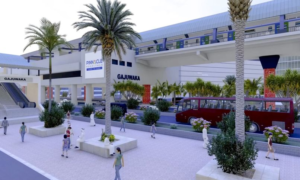
This Interview is a part of our latest Magazine: Subscribe to our Magazine Today!

